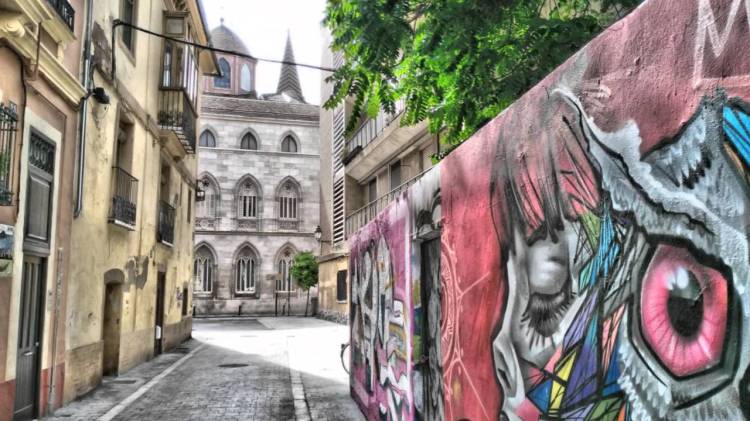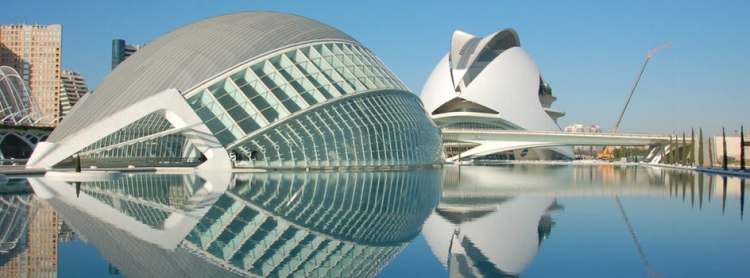
Barcelona is one of Europe’s most popular city break destinations, visited by over 30 million last year. Its name has been synonymous with ‘cool’ for decades- and it’s not hard to see why – a city beach, distinctive architecture, great nightlife, delicious food and a fantastic Mediterranean climate.
However, such popularity brings problems. As the summer season draws to an end, the issues Barcelona faces with tourism fills the travel supplements, such as the Guardian’s compelling photostory outlining how tourism is ruining the city.
So, maybe it’s time to look elsewhere for an Iberian adventure. Spain is a huge country, rich in landscape and culture. There’s something for everyone away from the crowds (and all the other things that come with a popular destination, like crime against tourists, over-inflated prices and huge queues for attractions).
If your main reason for visiting Barcelona is the city beach experience, why not try Valencia?

Founded by the Romans, Spain’s third-largest city sits about 200 miles south of Barcelona, so it has the same climate (it’s even slightly warmer) and the same coastline, with miles of beaches. Playa las Arenas is the most popular and although it isn’t as easily accessible as the one in Barcelona, it’s much less crowded. The bus and metro service will leave you at the edge of the quirky Cabanyal barrio, the old fisherman’s quarter filled with buildings boasting beautiful tiled facades, meaning that trips to the beach can be paired with an exploration of this fascinating district. Much more atmospheric than the overcrowded Barceloneta!

An Insider’s Guide to El Cabanyal
Plus… on the side closest to the city, you can walk on a genuine Gran Prix track before taking a drink on the harbourside with stunning views across the bay.
However, Valencia is more than just a city with a beach. It may not have Gaudi, but it has its own unique architecture, peppered with modernism and Moorish influences – not to mention an Old Town crammed full of old buildings that glow in the afternoon sun. Some of the main sights in this area are the 13th century Cathedral, which sits in the middle of the pretty Plaza del Virgen – the perfect place to watch the world go by over a drink or two.

In the North of the Old Town, Barrio del Carmen boasts two of Valencia’s most popular sights. Most impressive is the La Lonja de la Seda, the old silk exchange which has World Heritage status. Built between 1482 and 1548, it’s an excellent example of Valencian secular gothic style and a fascinating way to spend a few euros if only to experience the beautiful walled garden filled with the scent of the orange trees (in the Spring months, the sweet smell of the orange blossom hangs in the air, making it one of Spain’s most fragrant cities).

Before diving into the Barrio’s maze of cobbled lanes, venture across the road to the Market. It may not be as huge as Barcelona’s La Boqueria, but it’s less touristy, bursting with colourful fruit, pungent cheese and fresh fish. For a couple of euros, treat yourself to a refreshing horchata, the quintessential Valencian drink made from tiger nut milk.
Barrio del Carmen is a fascinating place to while away the hours. It’s both edgy and traditional, a warren of cobbled lanes that wind between cool boutiques, busy eateries, street art and classical architecture. Here and there, tiny plazas appear, filled with tables inviting you to stop for a traditional paella (invented in Valencia!) or a drink of Agua de Valencia, a refreshing yet potent concoction of gin, vodka, orange juice and cava. In the evening, these areas are packed with people socialising in bars around Placa Negrita or thronging streets like Carrer Corona, popping from bar to bar, with places like Tinto Fino Ultramarino serving up modern twists on traditional tapas.

If it’s art you’re after, Valencia also boasts a couple of excellent galleries. The Museo de Bellas Artes is within easy walking distance to the Old Town and its home to works by Velazquez, El Greco and Goya.
However, despite all of this culture and traditional, Valencia is perhaps most famous for its modern architecture: namely the works by Santiago Calatrava at the City of Arts and Sciences. Completed in 1998, it is made from six distinct structures, one of which holds Europe’s largest aquarium! There’s also an IMAX, an Opera house and a Museum of Sciences, not to mention regular workshops and exhibitions.

Even if museums of science aren’t your thing, there are some beautiful gardens around the area for a stroll. Valencia is home to a 5 mile swathe of green that cuts right through the city – a nature-filled Ramblas all of its own! In 1957, the river Turia flooded the city, so plans were made to divert it. This left the riverbed exposed and thanks to public pressure, it was left unfilled. Now, it’s known as the Jardin de Turia, home to features such as Calatrava’s Alameda bridge, bike paths, event spaces, recreation fields, fountains and more. A perfect place for a leisurely paseo on a warm evening as people flit past on bikes or roller skates or even for a picnic underneath the fragrant orange trees. There’s no way you can experience this on Las Ramblas!

So, what are you waiting for? Bin the Barcelona itinerary and visit Valencia!
Valencia is also famous throughout Spain for its festivals, with the biggest (and most notorious) being Las Fallas, a ten day festival of fire every March. All over the city, areas are divided into barrios, with neon signs proclaiming the name of an areas particular falla – there are so many it feels like every crossroads is a different district! Each district has two plantas (plastic sculptures of popular figures)- a big one and one for kids, which are publicly displayed for competition during the festival. The different areas put a lot of time, effort and money into their celebrations, with pop-up bars and stages appearing beside every pair of plantas. Every night, every district has its own firework show and live music of some sort, which means the whole city comes alive with noise, building to the last 3 – 4 nights where there are huge fireworks in the city at midnight.
Fireworks during the day? How does that work? My thoughts exactly, until I experience the thing for myself. One of the most interesting part of Las Fallas is the mascleta held every day at 2pm in the Plaza Ayuntamiento. It’s a display of gunpowder explosions timed to sound like music. It is the loudest thing you will ever hear – my chest cavity filled with sound and people are advised to keep their mouths open in case of burst eardrums. A truly exhilarating experience!
Watch this year’s final Mascleta: it really gets going about 5 minutes in!
However, the stand-out part of the whole experience for me wasn’t the never-ending noise (local children are constantly throwing loud bangers on the ground, with no heed for safety), but La Crema. On the last night, there’s a huge fire procession, with fireworks shooting from parade floats into the crowds. Then, at 10pm, the local festivities begin again, but with a different, and much more dangerous twist. Every planta that didn’t win (ie. all bar one) is burnt, with great ceremony. The plastic sculptures are laced with fireworks and marching bands come along and play as the years’ work explodes in flames. Firemen are on hand, hosing the buildings to avoid the whole city burning to the ground. The whole city feels like some sort of crazy carnival war zone, with infernos on every street corner and the sound of brass bands through the smoke. The festival closes with the burning of the municipal falla in Plaza Ayuntamiento, a structure so high even the fire engine’s crane couldn’t reach it.
Valencia: beaches, architecture and the most memorable fire festival you’ll ever experience.




